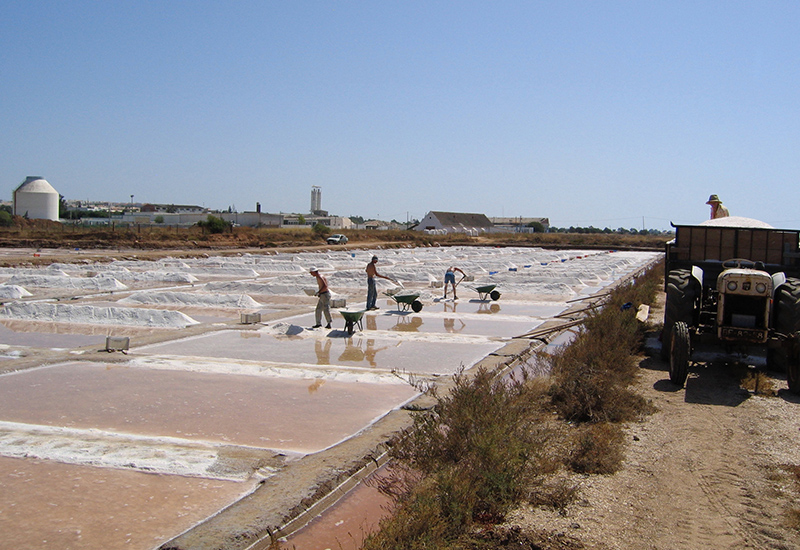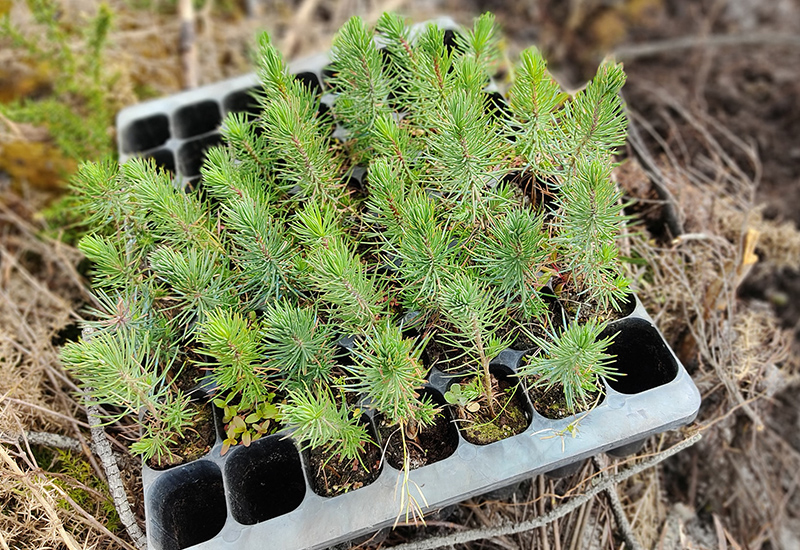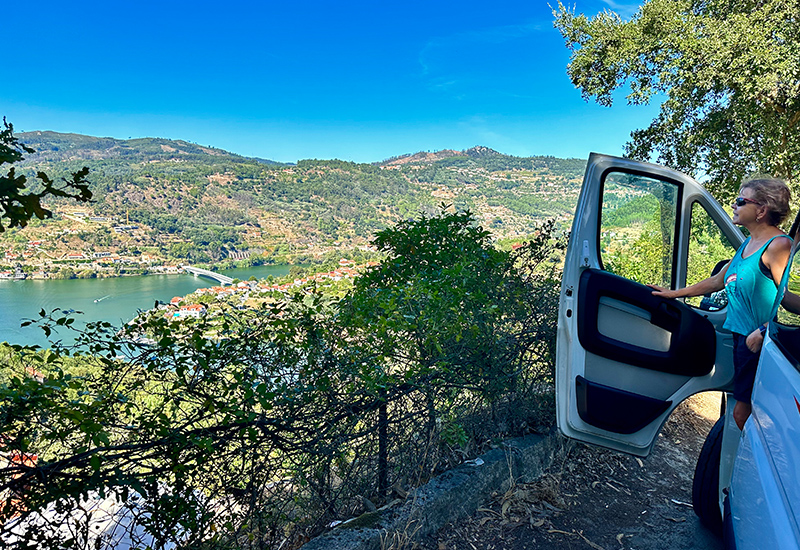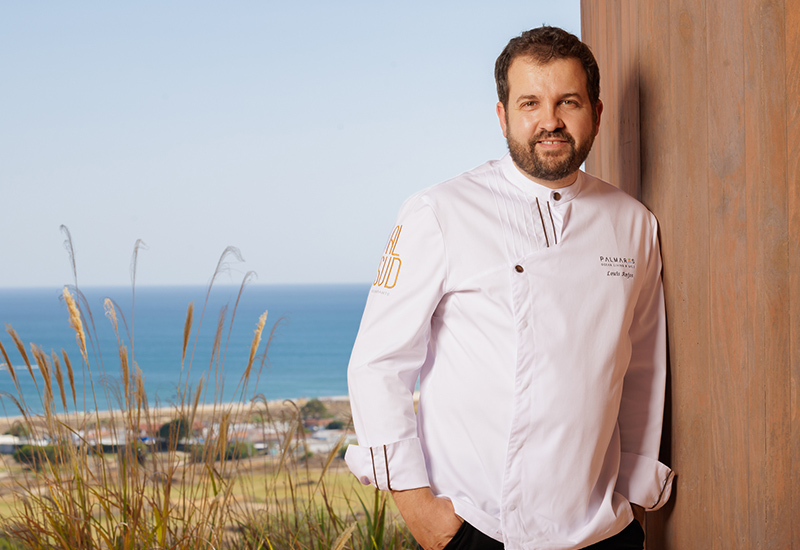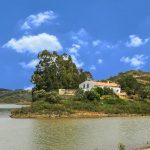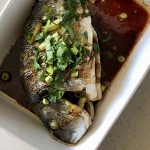Luxurious flavours from Portugal’s Atlantic Contributed by Andrea Siebert Founder and Managing Director of Marisol® Sea Salt for RelishPortugal.com
Picture a hot summer day in the Eastern Algarve. A gentle breeze fans warm air over the Atlantic coastline and brings the salty promise of the sea. The lagoon landscape of the Ria Formosa stretches to the horizon, a kaleidoscope of bright blue glistening waters and sandy yellow spreads, mingled with heat-withered green bushes. In the centre of this setting are the salt flats: arrays of small rectangular crystalliser pans covered in white, surrounded by large shallow ponds, where seawater concentrates into a reddish brine.

Sal Tradicional piled at sunrise © Bernd Keiner for Marisol
Harvesting from the sea
The scene is populated by tanned men with long-handled tools, the salt gatherers, or marnotos in Portuguese. Standing between the pans, they carefully operate their wooden rakes to loosen the layer of salt from the bottom, gently moving the crystals within the brine, then shifting the salt towards the rim and heaping it up at the dams, where it dries in the sun.
This is how Sal Tradicional, Portugal’s traditional sea salt, is gathered still today, three to five times between June and September, following a tradition of more than 2000 years. Salt gathering at the Algarve coast traces as far back as Phoenician times, and was later perfected by the Romans, who ingeniously designed the layout and functioning principles still in use: declining levels from the water inlet to the crystallisers, and a clever system of shutters and channels (to ensure that water and brine move within the salina driven only by gravity).
Only on dry and calm days, a fragile layer of salt crystals forms floating on the top of the brine–Flor de Sal, the flower of salt, also known as the “cream of the salt pans”. Its flaky, delicate crystals are harvested daily using a skimming sieve, which the gatherer shifts at an angle just beneath the surface of the brine. The dripping wet flakes are left to rinse off on the sieve for a moment before they are transferred to small crates and left to dry in the sun. Skimming the brine yields only a fraction of the quantity gathered from the bottom of the pans, so it comes as no surprise that Flor de Sal is not only a prized but also a high-priced delicacy.

Salinas Ria Formosa prior to season start © M. Linke for Marisol
More than nostalgic
For production, Marisol works in partnership with certified traditional producer João Mendonça Pedro, who runs salt pans in Olhão and in Castro Marim, close to the Spanish border. Coming from an old salineiro family, João and his staff work the salt marshes in the same way and on the same plots that his great-great-grandfather worked on more than a century ago. Since he began reviving the family’s salt estate about 15 years ago, João has turned his Salinas do Grelha into a buzzing sustainable business, which in addition to salt farming also boasts educational visits, guided tours, and even a dead-sea spa (www.salinasdogrelha.com).
Keeping up the manual gathering techniques, however, is not just nostalgic for the sake of good old times, they actually make a lot of sense in the light of a green economy and sustainable production. The absence of pumps and machinery is paramount in traditional salt farming and yields an excellent ecological footprint, essential for its continued existence in the protected nature reserves of the Algarve.
The lagoons of the Ria Formosa natural park, stretching for 60 kilometres from Faro to the east of Tavira, and of the Sapal do Castro Marim reserve at the Guadiana River bordering Spain are important habitats for water birds, such as ibises, egrets, spoonbills, and flamingos. They feed on tiny crustaceans present in the large shallow evaporation ponds of the salinas, where seawater gradually turns into brine through the action of sun and wind. The salt-loving mini shrimps, Artemia salina, are about eight to ten millimetres long and contain carotenoids, reddish pigments, which colour the waters and lend the flamingos their pinkish feathers.

Harvesting Flor de Sal © Thomas Ruhl for Marisol

From sea to table
After a couple of days under the Algarve sun, the glittering white salt crystals are dry enough to be transferred to Marisol’s premises for further processing. Natural impurities such as plant parts, little lumps of soil, and the occasional trapped insect, are picked and removed by hand, and the more compact crystals of Sal Tradicional are crushed in a stainless-steel grinder. Flor de Sal does not undergo grinding, as its smooth, flaky crystals crumble easily. And that’s it, no washing and no additives are needed before the salts are packed, ready to reach the kitchen shelves of chefs and connoisseurs in Portugal and around the globe.
Rich in minerals like calcium, potassium, and magnesium and with a full, yet balanced flavour, traditional sea salt is the culinary allrounder for cooking preparations, whereas Flor de Sal with its subtle taste is perfect for finishing touches and a sophisticated companion at the table.

Like this story? Read more like it in Relish Portugal, the award-winning food and culture magazine for Portugal lovers everywhere. Published digitally 4 times/year since January 2000, subscribers have access to the entire back issue library plus receive the Pure Portugal e-cookbook and recipe deck.
Tomorrow magazine readers can enjoy a special Relish Portugal (RelishPortugal.com) subscription rate of 57€, a 15% discount, by entering Tomorrow+RP at checkout.
Olhão-based Marisol Sea Salts has made it their mission to promote hand-harvested Atlantic salt from traditional salt farming with chefs and gourmets worldwide. Learn more at www.marisol.biz
